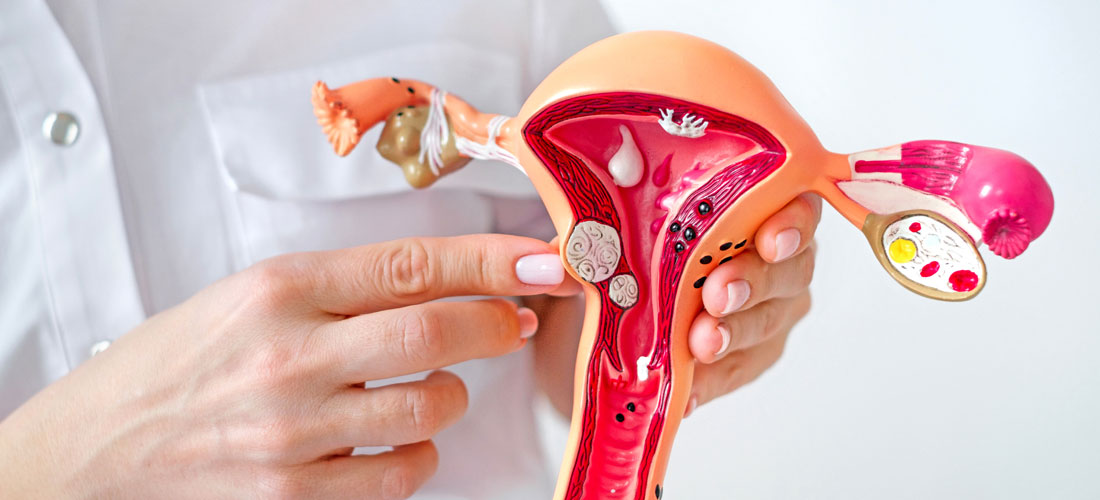Iliac Venous Stenting
Pelvic Congestion Syndrome (PCS) is a condition in which veins in the pelvis become enlarged, twisted, or dysfunctional, similar to varicose veins. PCS is typically caused by reflux (backward flow) in the ovarian or pelvic veins, leading to blood pooling and vein dilation. Over time, this pressure and stagnation can trigger persistent symptoms that affect daily life.
At RIVEA Vascular Institute, we offer a precise, minimally invasive treatment for PCS: Venous Stenting, a highly effective procedure that restores normal blood flow and significantly improves quality of life.
Venous stenting is typically considered when PCS symptoms are caused by narrowed or compressed pelvic veins, often due to anatomic conditions like May-Thurner Syndrome, where the left iliac vein is compressed by the right iliac artery. In these cases, blood flow is significantly reduced, causing vein congestion in the pelvis.
This treatment is most often performed after other causes of pelvic pain have been ruled out, and imaging confirms venous obstruction or narrowing as a major contributor to symptoms.
When is stenting performed?
While PCS can result from ovarian vein reflux, a large number of cases are due to obstruction of the iliac veins, particularly compression of the left common iliac vein by the right common iliac artery, known as May-Thurner Syndrome.
This compression:
- Increases pressure in the pelvic veins
- Leads to backward flow (venous reflux)
- Causes the development of painful varicosities in the uterus, ovaries, and vaginal wall
Stenting is considered when imaging shows:
- Evidence of venous outflow obstruction
- A non-thrombotic iliac vein lesion (NIVL)
- Persistent symptoms not resolved with conservative treatment
In patients with both iliac vein compression and ovarian vein reflux, iliac vein stenting may be combined with embolization for more effective and durable symptom relief.
Understanding Iliac Venous Stenting
Who Is a Candidate for Stenting?
You may be a candidate if you experience:
- Chronic pelvic pain worsened by standing, intercourse, or menstruation
- Visible or internal varicose veins in the pelvis or upper thighs
- Lower limb swelling or heaviness
- No improvement with hormonal therapy or pain medications
- Imaging evidence of iliac vein narrowing or compression
Patients with nickel allergies, active infections, or unmanageable bleeding disorders may not be eligible.
Preparing for Venous Stenting
Before the procedure, you will undergo a comprehensive evaluation that includes:
- A detailed medical history and symptom review
- Advanced imaging such as MRI, CT venography, or duplex ultrasound to assess the pelvic veins
- Blood work, and in some cases, a diagnostic venogram to confirm vein narrowing or compression
Your care team will provide instructions on medications to stop before the procedure (such as blood thinners) and whether you’ll need to fast beforehand. You’ll be advised to arrange for someone to accompany you home afterward.
What Happens During the Procedure?
- Venous stenting is a minimally invasive outpatient procedure performed under local anesthesia with light sedation.
- A small incision (2–3 mm) is made, usually near the groin or neck.
- A thin catheter is inserted into the vein and guided to the narrowed segment using live X-ray (fluoroscopy) and contrast dye.
- A tiny metal mesh tube (stent) is deployed in the narrowed section to hold the vein open and restore normal blood flow.
- The catheter is removed, and the incision is covered with a small bandage—no stitches are typically needed.
- The entire procedure typically takes under an hour, and most patients are discharged the same day.
After the Procedure
- Most patients return to routine activities within a few days.
- Strenuous activity and heavy lifting should be avoided for 1–2 weeks.
- Surveillance imaging (ultrasound or CT) is typically done at 1, 3, 6, and 12 months, then annually to monitor stent patency.
- Antithrombotic therapy may be initiated depending on your underlying condition. In non-thrombotic cases, anticoagulation is often unnecessary, whereas post-thrombotic cases may require short- or long-term medication.
Why Venous Stenting may be the best choice
Venous stenting offers key advantages for patients with vein-related PCS:
- Directly addresses the root cause of symptoms
- No general anesthesia, large incisions, or hospital stay
- Patients feel improvement within days
- Stents are designed for long-term relief
For PCS caused by anatomical vein narrowing or compression, stenting offers more targeted and lasting relief than medication alone.
Why choose RIVEA?
At RIVEA Vascular Institute, we provide advanced, patient-centered care for complex pelvic venous disorders:
- Our Expertise: Dr. Karthik Mikkineni, American board-certified vascular surgeon with extensive experience in pelvic venous disease
- State-of-the-art diagnostic capabilities
- Individualized diagnosis and treatment—no “one-size-fits-all” protocol
- Emphasis on organ-preserving, fertility-conscious care
Every intervention at RIVEA is guided by safety, precision, and a deep commitment to patient outcomes.
Frequently Asked Questions (FAQs)
Will venous stenting cure my pelvic pain?
If your symptoms are caused by pelvic vein compression, venous stenting can provide significant and lasting relief. Most patients report marked improvement within days to weeks.
Is the procedure painful?
The procedure is performed under local anesthesia with sedation. You may feel mild pressure, but no significant pain. Mild soreness at the puncture site is expected.
What are the potential risks of the treatment?
While iliac vein stenting is generally safe, some risks include:
Stent migration (rare but serious; may require surgical retrieval)
In-stent restenosis (narrowing inside the stent over time)
Back pain (usually transient; rarely persistent)
Nickel allergy (especially important in women; severe allergy may preclude stent use) Bleeding or vessel injury during the procedure
These risks are relatively rare and can be minimized by careful planning and precise technique using IVUS and tailored stent sizing.
How long does the stent last?
Stents are designed to be permanent. With proper placement and follow-up, they maintain vein patency for years.
Can I still have children after venous stenting?
Yes. Venous stenting does not affect fertility. In fact, many women experience improved pelvic health that may support future pregnancies.
Will I need follow-up care?
Absolutely. At RIVEA, follow-up imaging and symptom tracking are part of our comprehensive care model to ensure optimal long-term outcomes.
If you’ve been living with unexplained pelvic pain, heaviness, or pelvic varicose veins, the cause may be treatable venous obstruction.
At RIVEA, we’re committed to helping you reclaim comfort, health and peace of mind without major surgery.
Click here to learn more about:
Pelvic Congestion Syndrome
For any inquiries, post your query here:
Ask Rivea
Contact us today to explore your options.
Call Now
-

Dr. Karthik Mikkineni
MD, FACS, FSVS, RPVI
Dr. Karthik Mikkineni is an internationally recognized vascular and endovascular surgeon, known for his pioneering work in complex aortic interventions, limb salvage, and carotid disease management.
View Profile Book an Appointment
Blog
Media



